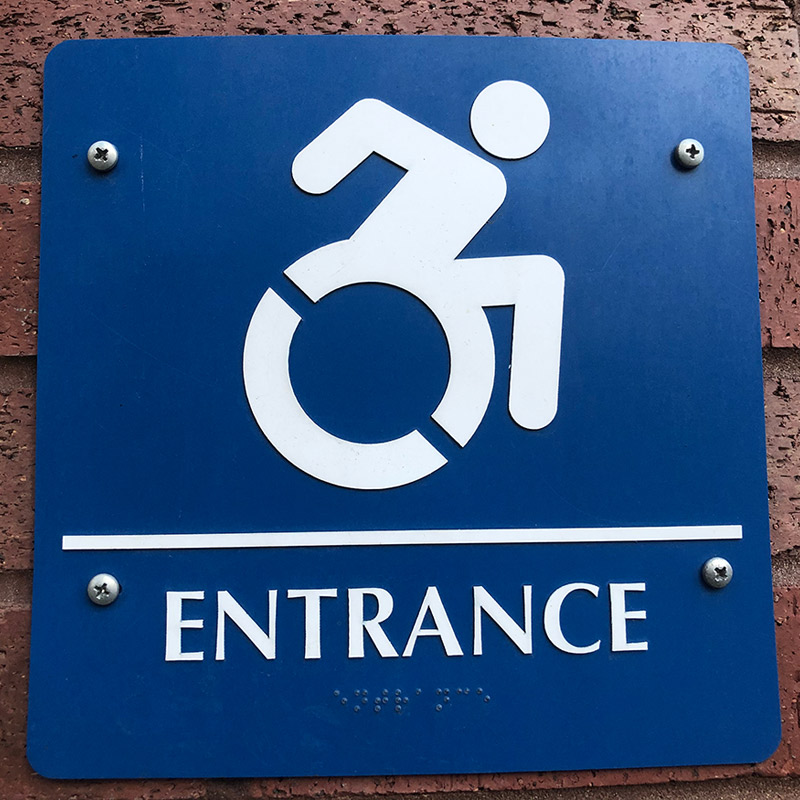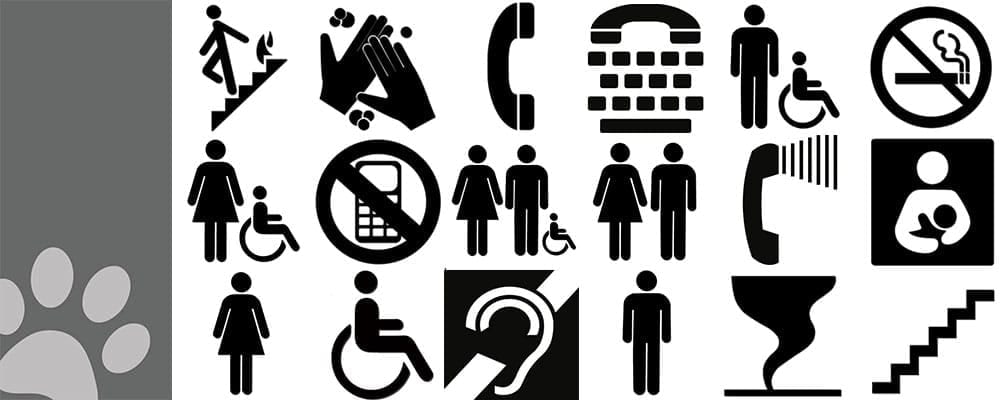Personalizing ADA Signs to Satisfy Your Details Needs
Personalizing ADA Signs to Satisfy Your Details Needs
Blog Article
ADA Signs: Ensuring Availability and Compliance in Public Spaces
ADA signage plays a crucial role in guaranteeing ease of access and conformity within public spaces, considerably adding to a comprehensive atmosphere for individuals with specials needs. As we discover the nuances of ADA signage, from tactile features to create ins and outs, it's vital to take into consideration just how these components integrate to support the rights of all customers.
Importance of ADA Signage
In modern-day culture, the value of ADA signs prolongs beyond mere conformity with lawful mandates to embody a commitment to inclusivity and accessibility for all people. These indications are necessary in producing environments where people with handicaps can browse public spaces with the same convenience and self-reliance as those without impairments. By providing standardized and clear information, ADA signs makes sure that everyone can access centers, services, and information without obstacles.
The value of ADA signage exists in its capability to enhance the top quality of life for people with disabilities by advertising equal gain access to. It eliminates the barriers that may otherwise prevent their ability to get involved completely in area life. Moreover, these signs function as visible signs of an organization's commitment to variety and equality, mirroring wider social values that promote the civil liberties and dignity of all people.
Moreover, ADA signage plays a crucial function in public safety and security. By directing people to leaves, washrooms, and various other essential facilities, it makes certain that all people, regardless of physical capability, can leave securely during emergency situations. In recap, ADA signage is not just a regulative need but a powerful device for cultivating a equitable and comprehensive society.
Key Components of Compliance

Positioning is crucial; indications need to be set up in places that are obtainable and quickly visible. Usually, signage should be mounted in between 48 and 60 inches from the ground to make certain access for both standing and mobility device individuals. Tactile elements, such as Braille, are essential for people with aesthetic disabilities, offering critical details in a non-visual layout.
High-contrast colors between the message and background are required to enhance readability for people with reduced vision. The ADA mandates certain comparison ratios to ensure clarity. Additionally, character dimension is a crucial consideration, with minimum elevation demands dictated by the viewing range to make sure readability from different angles.
Style Considerations for Access
Creating accessible signage requires a careful technique to ensure it meets the demands of all individuals, specifically those with specials needs. The size of the text is equally essential, with ADA guidelines suggesting a minimal elevation based on watching distance to ensure clarity.
Contrasting shades in between message and view it now background are vital for exposure, especially for people with aesthetic impairments. A high comparison ratio aids distinguish the text from its background, enhancing readability under different illumination conditions. Furthermore, tactile aspects, such as Braille and increased characters, are important for individuals who are blind or have low vision. These elements should be located at a consistent height and setting to ensure simple gain access to and comprehension.
Furthermore, the placement of signs plays a considerable function in ease of access. Indicators need to be set up in places that are unobstructed and conveniently obtainable. Guaranteeing that signage is placed at proper heights and angles makes it possible for all customers, including those using mobility devices, to communicate with them effectively.
Usual Errors to Stay Clear Of

One more prevalent mistake is the incorrect positioning of signage. ADA standards specify specific elevation and location needs to make sure that signs are reachable and conveniently visible by all people, including those using wheelchairs. Disregarding these standards not just obstructs ease of access however additionally runs the risk of non-compliance with lawful standards.
In addition, insufficient contrast in between message and background is a regular oversight. Ample contrast is vital for readability, specifically for individuals with low vision. Developers sometimes select colors that are aesthetically appealing however do not have the necessary contrast, making the text tough to discern.
Finally, some developers fall short to include tactile elements, such as Braille, which are vital for individuals read this that are blind. Leaving out these functions not just results in non-compliance with ADA policies however also limits access for a section of the population that depends on responsive information.
Future Trends in Signage
Innovations in modern technology and boosting understanding of inclusivity are shaping the future fads in signs style. Digital signage, for circumstances, is advancing to consist of real-time updates and interactive features, which can be crucial in providing vibrant info in public areas.
One more arising pattern is the utilization of increased reality (AR) to boost user experience. AR-enabled signs can overlay digital info onto the physical environment, supplying visually damaged individuals with auditory or haptic comments. ADA Signs. This technology not just improves access but additionally creates an interesting experience for all individuals
Sustainability is also a substantial aspect affecting signage fads. Eco-friendly products and energy-efficient lighting options are being focused on to straighten with international environmental goals. Developments in products scientific research are leading to the growth of more weather-resistant and long lasting my review here indicators.
Verdict
ADA signs plays a vital role in guaranteeing availability and conformity within public areas by including responsive components, high-contrast shades, and strategic placement. The adherence to ADA standards not only facilitates safe navigation for individuals with disabilities but also represents an organization's commitment to diversity and inclusivity. By avoiding common mistakes and embracing future trends, public spaces can remain to progress these worths, making certain that the rights and self-respect of all people are valued and upheld.
ADA signage plays a crucial role in assuring access and conformity within public spaces, dramatically adding to a comprehensive setting for people with disabilities. As we check out the nuances of ADA signage, from responsive functions to make complexities, it's critical to take into consideration just how these aspects coalesce to copyright the rights of all individuals.In modern-day culture, the relevance of ADA signage prolongs past mere conformity with legal requireds to embody a commitment to inclusivity and availability for all individuals. By supplying standard and clear information, ADA signs ensures that everyone can access facilities, solutions, and details without barriers.
ADA signage plays a vital duty in assuring accessibility and conformity within public spaces by integrating responsive aspects, high-contrast shades, and critical placement. (ADA Signs)
Report this page